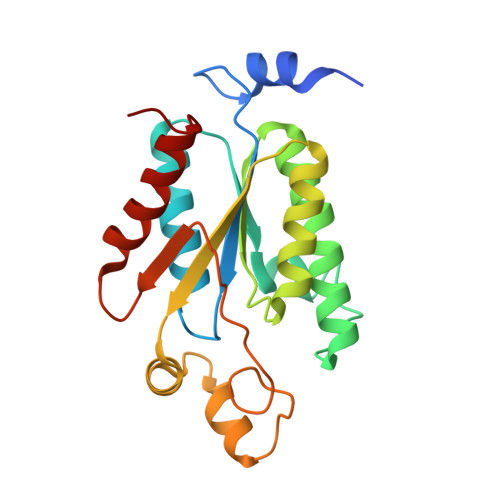Redox switching mechanism of the adenosine 5'-phosphosulfate kinase domain (APSK2) of human PAPS synthase 2.
Zhang, L., Song, W., Li, T., Mu, Y., Zhang, P., Hu, J., Lin, H., Zhang, J., Gao, H., Zhang, L.(2023) Structure 31: 826-835.e3
- PubMed: 37207644
- DOI: https://doi.org/10.1016/j.str.2023.04.012
- Primary Citation of Related Structures:
8I1M, 8I1N, 8I1O - PubMed Abstract:
Adenosine 5'-phosphosulfate kinase (APSK) catalyzes the rate-limiting biosynthetic step of the universal sulfuryl donor 3'-phosphoadenosine-5'-phosphosulfate (PAPS). In higher eukaryotes, the APSK and ATP sulfurylase (ATPS) domains are fused in a single chain. Humans have two bifunctional PAPS synthetase isoforms: PAPSS1 with the APSK1 domain and PAPSS2 containing the APSK2 domain. APSK2 displays a distinct higher activity for PAPSS2-mediated PAPS biosynthesis during tumorigenesis. How APSK2 achieves excess PAPS production has remained unclear. APSK1 and APSK2 lack the conventional redox-regulatory element present in plant PAPSS homologs. Here we elucidate the dynamic substrate recognition mechanism of APSK2. We discover that APSK1 contains a species-specific Cys-Cys redox-regulatory element that APSK2 lacks. The absence of this element in APSK2 enhances its enzymatic activity for excess PAPS production and promotes cancer development. Our results help to understand the roles of human PAPSSs during cell development and may facilitate PAPSS2-specific drug discovery.
- Department of Pharmacology and Chemical Biology, State Key Laboratory of Oncogenes and Related Genes, Shanghai Jiao Tong University School of Medicine, Shanghai 200025, China.
Organizational Affiliation:


















